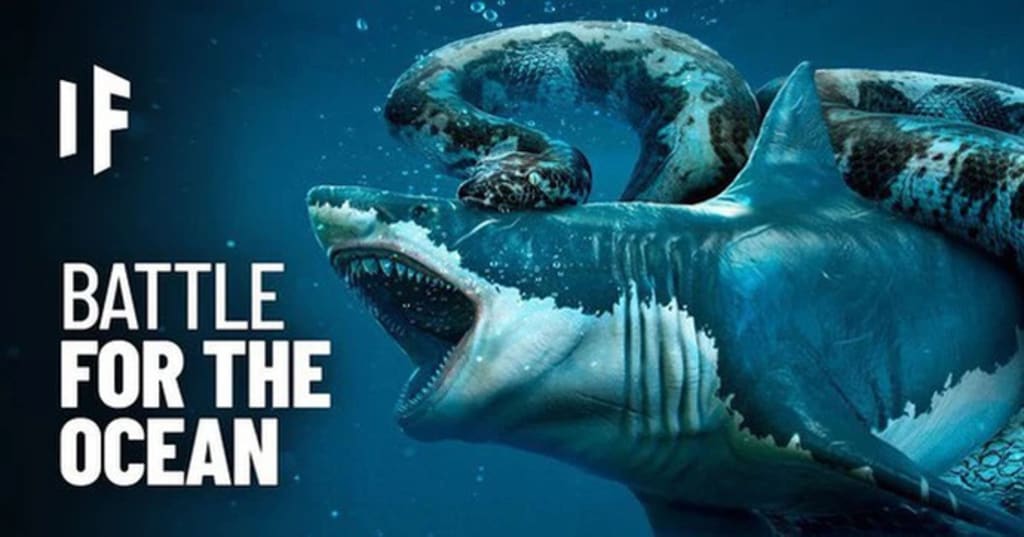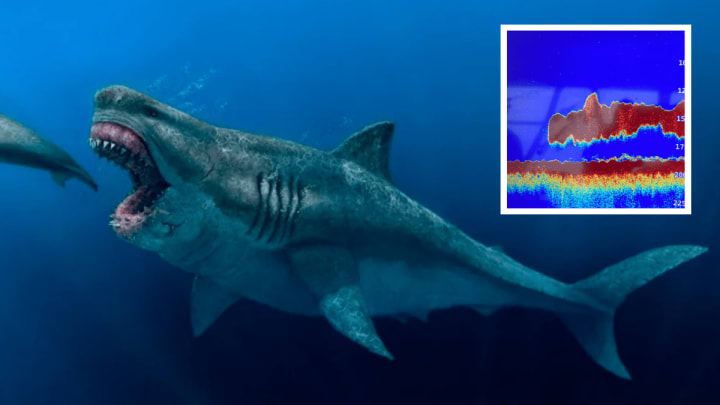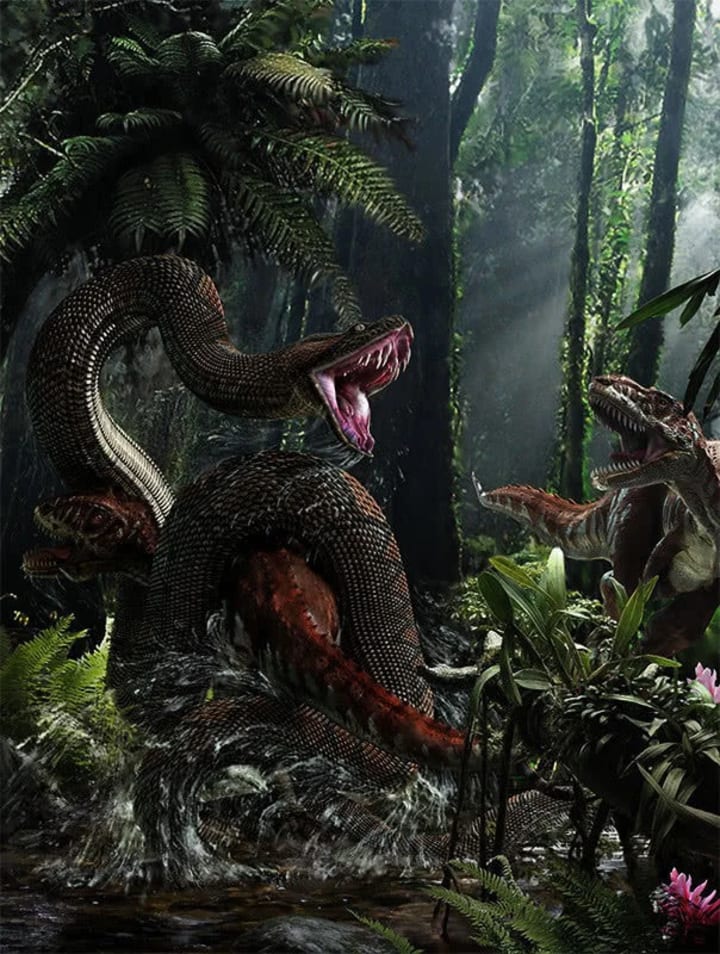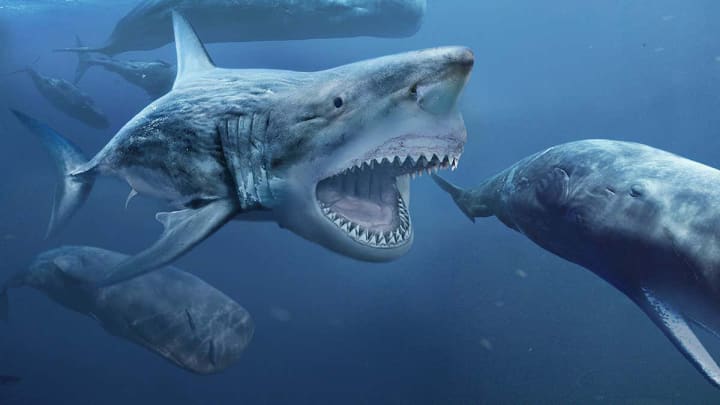
Prepare to be transported into the realm of imagination as we embark on an epic exploration of two prehistoric behemoths, locked in a battle for the ages. Before this mythical showdown unfolds, let's delve into the astounding statistics of these two colossal creatures, igniting our curiosity and sparking the flames of conjecture.
First, we have Megalodon, an apex predator of unparalleled proportions that once prowled the Earth's oceans. These leviathans reigned supreme around 20 million years ago, but their dominion came to an end approximately 3.6 million years in the past. Picture a colossal creature stretching to a staggering 18 meters in length—three times the size of the largest recorded white shark. Megalodon boasted a massive jaw, an astonishing 3 meters in width, housing a formidable arsenal of 276 teeth. Its bite force was a staggering match for crushing a common automobile.

Now, let your imagination lead you to Titanoboa, an awe-inspiring giant of the Paleocene era. This serpentine colossus, a relic of a distant epoch, thrived on land until 56 million years ago. Titanoboa, with an average length of 13 meters and weighing in at approximately 1.25 tons, was free to roam its jungle domain, unrivaled by any other creature.
While both Megalodon and Titanoboa reveled in warm climates, they inhabited vastly different ecosystems. Megalodon, the oceanic titan, patrolled the depths of the sea, while Titanoboa ruled the dense jungles. Thus, a natural face-off between these titans remained an impossibility, confined solely to the realms of comparison and human imagination.
Megalodon, equipped with a superlative sense of smell, could potentially detect the presence of Titanoboa. Additionally, the shark could employ electroreceptors to sense the electric field and energy generated by Titanoboa, potentially granting it an upper hand in initiating an attack.
Nonetheless, the cold-blooded Titanoboa was no less formidable, armed with its own suite of tricks. It could stealthily stalk its prey, lurking in the water or amidst the foliage, waiting for the perfect moment to strike—a process that could span days. If Megalodon swam unsuspectingly beneath, Titanoboa might pounce before the massive shark had a chance to react. As the Megalodon thrashed about in response, Titanoboa's teeth would act like meat hooks, sinking deeper into the mammoth shark's body.

Next, Titanoboa would constrict its prey, endeavoring to squeeze the life out of the Megalodon. With a pressure exceeding 276 kilopascals (equivalent to 400 psi), Titanoboa possessed the capability to crush the Megalodon.
However, sharks breathe differently from humans, relying on gills to extract oxygen from water. Even with its jaws extending up to 1.8 meters, Titanoboa couldn't engulf the aquatic behemoth whole. To emerge victorious, Titanoboa would need to crush the Megalodon, collapsing its organs or obstructing its gill openings. Victory might be within Titanoboa's grasp if it could drag the battle into shallower waters.
In deeper waters, the Megalodon would have the upper hand, with the advantage of high-speed attacks from below. This fearsome predator would employ its lethal jaws to paralyze and incapacitate Titanoboa, violently shaking the serpent's massive body. In an instant, those razor-sharp teeth would rend the giant python in two.

The outcome of this titanic battle hinges on which contender first detects its adversary. It's a contest of patience and raw power between these colossal creatures. Alas, since these titans did not coexist in the same era, we can only wonder at the outcome of this imaginary duel, shrouded in the mists of time. As we delve into this mesmerizing what-if scenario, we invite you to let your imagination run wild, conjuring the specter of an ancient world where these titans clashed in a prehistoric showdown for the ages.






Comments
Test is not accepting comments at the moment
Want to show your support? Send them a one-off tip.